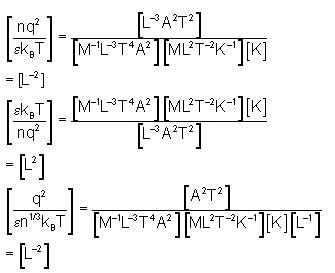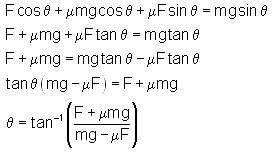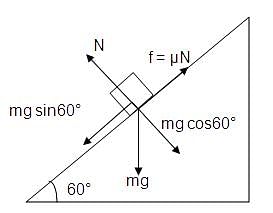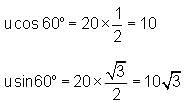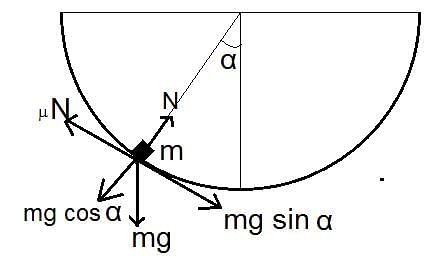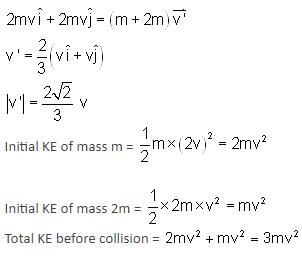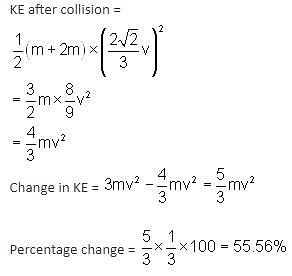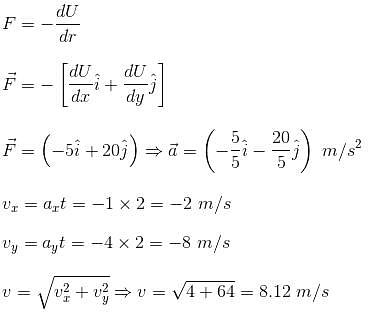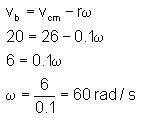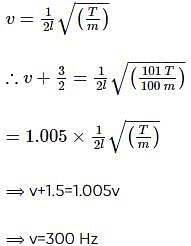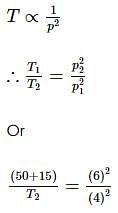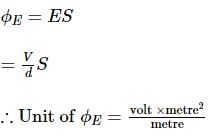BITSAT Physics Test - 7 - JEE MCQ
30 Questions MCQ Test - BITSAT Physics Test - 7
Which among the following has the dimension of Volume [L3]? Provided that:
n = number of particle per unit volume
q = charge
T = Absolute temperature
KB = Boltzmann's Constant
ε = permittivity of dielectric material
n = number of particle per unit volume
q = charge
T = Absolute temperature
KB = Boltzmann's Constant
ε = permittivity of dielectric material
Three blocks A, B and C are attached to an inextensible light string. The string is passed over two pullies as shown in the figure. Block A is moving downwards with a constant acceleration of a. What will be the value of a if the mass of the blocks A, B and C are m, m and 3m, respectively and the plane of incline is frictionless.
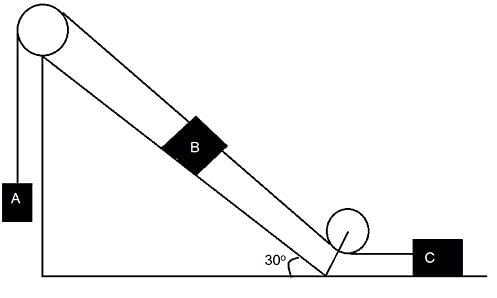

| 1 Crore+ students have signed up on EduRev. Have you? Download the App |
A block of mass m is residing on an inclined plane of angle θ. A force F is applied on the block in horizontal direction. The coefficient of friction between the block and the inclined surface is μ, for the block to be in static condition, the value of θ must be
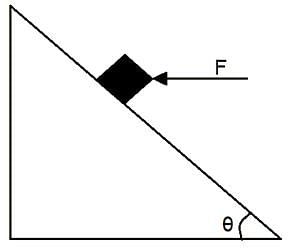

A block of 5 kg is attached to a massless spring with spring constant k = 4 N/m. The whole arrangement is placed on a plane inclined at an angle 60o. If the coefficient of friction is 0.5, the energy stored in the spring will be
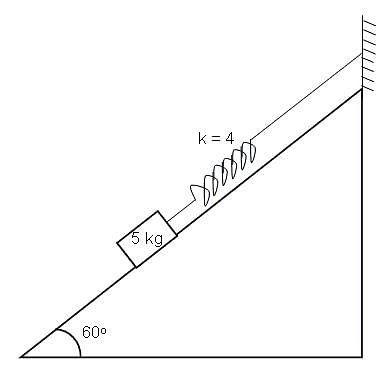
A uniform rod of mass 10 kg and length 1 meter is hinged from one end and is at rest on a smooth plane. An impulse p is applied on the free end of the rod and the rod is rotated 90o from the initial position in 8 seconds. The value of the impulse applied is
Two balls A and B are thrown from the top of a hill of 30-meter height. Ball B is thrown sometimes after the ball A. Ball B is thrown horizontally and ball A is thrown at an angle of 30o with the vertical. If the initial velocity of both the balls are same and is equal to 20 m/s, at what point does the two balls would collide in the air during their flight?
A block of mass m is in rest at a point P on a vertical semi-circular track. The point P is at an angle α as shown in the figure. If the value of the coefficient of friction between the block and the track is μ, the maximum value of α in terms of μ will given by

Two bodies of mass m and 2m are moving with a velocity of 2v and v, respectively. Mass m is moving along the x axis and mass 2m is moving along the y axis. After sometime, mass 2m hits the body of mass m. The collision is purely inelastic. The percentage loss of the energy in the collision will be
Work done in moving a 5 kg body in xy plane is given by (5x + 20y) J. At time t = 0, the velocity of the body is zero and displacement x = 0. What is the magnitude of the velocity of the particle at t = 2 sec?
A sphere of radius 100 mm is rolling without slipping on a block which is moving with a constant velocity of 20 m/s. If the linear velocity of the centre of mass of the sphere for a stationary observer is 26 m/s, the angular velocity of the sphere is
Three sources of equal intensities with frequencies 400, 401 and 402 vibrations per second are sounded together. The number of beats per second is
At a moment in a progressive wave, the phase of a particle executing SHM is π/3. Then the phase of the particle 15 cm 15 cm ahead and at time T/2 will be, if the wavelength is 60 cm
A person standing at a distance of 6 m from a source of sound receives sound wave in two ways, one directly from the source and others after reflection from a rigid boundary as shown in the diagram. The maximum wavelength for which, the person will receive maximum sound intensity, is

Two trains A and B are moving with speeds 20 m/s and 30 m/s respectively in the same direction on the same straight track, with B ahead of A. The engines are at the front ends. The engine of trains A blows a long whistle.

Assume that the sound of the whistle is composed of components varying in frequency from f1 = 800 Hz to f2 = 1120 Hz, as shown in the figure. The spread in the frequency (highest frequency - lowest frequency) is thus 320 Hz. The speed of sound in still air is 340 m/s.
The distribution of the sound intensity of the whistle as observed by the passengers in train A is best represented by
Two instruments having stretched strings are being played in union. When the tension of one of the instruments is increased by 1%, 3 beats are produced in 2 s. The initial frequency of vibration of each wire is
In Melde's experiment, the string vibrates in 4 loops when a 50g weight is placed in the pan of weight 15g. To make the string to vibrates in 6 loops the weight that has to be removed from the pan is
A string of length l = 10 cm is fixed at one end and free at other. The maximum possible wavelength that can be generated in the string is
When two wave of almost equal frequencies n1 and n2 are produced simultaneously, then the time interval between successive maxima is
In the production of beats by two waves of same amplitude and nearly same frequency, the maximum intensity to each of the constituent waves is
In the experiment for the determination of the speed of sound in air using the resonance column , it resonates in the fundamental mode, with a tuning fork when the length is 0.1 m . When this length is changed to 0.35 m, the same tuning fork resonates with the first overtone. Calculate the end correction.
A body of mass m=3.513 kg is moving along the x− axis with a speed of 5.00 ms−1. The magnitude of its momentum (according to significant figures) is recorded as
While measuring length of an object it was observed that the zero of the vernier lies between 1.4 and 1.5 of the main scale and the fifth vernier division coincides with a main scale division. If the length of the object measured is l, then the value of (l − 1.4) in terms of the least count C of the instrument is
The least count of the main scale of a screw gauge is 1 mm. The minimum number of divisions on its circular scale required to measure 5 μm diameter of a wire is:
The radius of the proton is about 10−15m. The radius of the observable universe is 1026m. identify the distance which is half-way between these two extremes on a logarithmic scale.
A new unit of length is chosen such that the speed of light in vacuum is unity. What is the distance between the sun and the earth in terms of this new unit, if light takes 8 min and 20 sec to cover this distance?
The legs of a spherometer are 5 cm apart. There are 10 division cm−1 on linear scale and circular scale has 100 100 divisions. The height h of a convex mirror measured in 2 MSD + 37 circular scale divisions. Find the radius of curvature of a convex mirror.
In an experiment for the determination of the speed of sound in air using the resonance method, the length of the air column that resonates in the fundamental mode with a tuning fork is 0.1 m. When this length is changed to 0.35 m , the same tuning fork resonates with the first overtone. Calculate the end correction.
The diameter of a cylinder is measured using a vernier callipers with no zero error. It is found that the zero of the vernier scale lies between 5.10 cm and 5.15 cm of the main scale. The vernier scale has 50 divisions equivalent to 2.45 cm. The 24th division of the vernier scale exactly coincides with one of the main scale divisions. The diameter of the cylinder is



